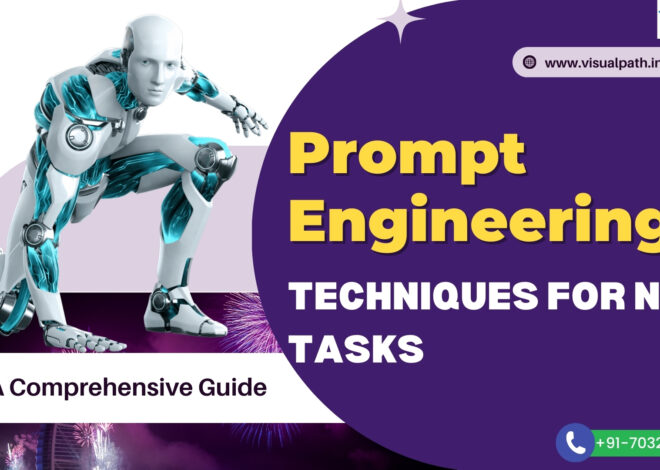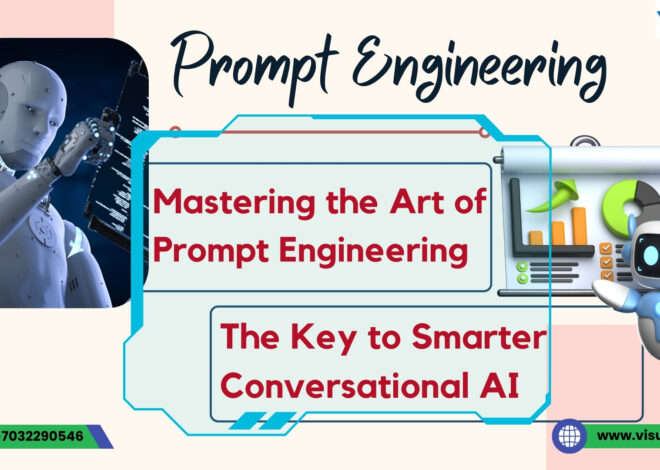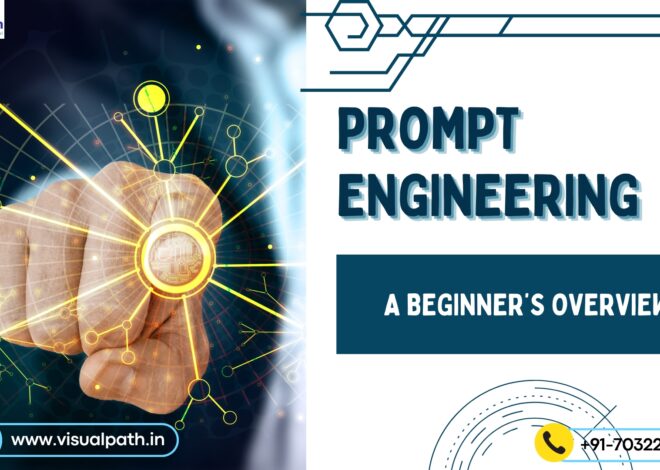
Prompt Engineering Course: Prompt Engineering for Beginners – Simple Strategies for AI Interaction
The Prompt Engineering Course is designed to introduce individuals to the art of interacting effectively with artificial intelligence (AI) models by crafting precise and purposeful prompts. As AI systems become more advanced and accessible, the role of prompt engineering is becoming increasingly vital. Whether you’re using AI to generate text, analyze data, or automate processes, the success of these interactions often hinges on the quality of the prompts provided. For beginners, understanding the fundamentals of prompt engineering is essential for optimizing AI responses. Through structured Prompt Engineering Training, participants learn how to communicate with AI systems in a way that maximizes the accuracy and relevance of the outputs they receive.
Why Prompt Engineering Matters for AI Interaction
As artificial intelligence becomes integrated into more industries, from customer service to creative writing, the ability to interact with AI systems has become a highly sought-after skill. The key to successful AI interaction is prompt engineering, which ensures that the AI understands what the user wants and delivers the appropriate response. The Prompt Engineering Training provided in the course teaches beginners how to approach these interactions thoughtfully. Instead of receiving vague or irrelevant outputs, participants learn how to construct prompts that guide the AI to produce more accurate, coherent, and actionable results.
A major aspect of prompt engineering involves refining prompts through trial and error. For example, a broad or unclear prompt may lead to a response that is too generic or doesn’t address the intended question. Conversely, a well-structured prompt narrows the AI’s focus and provides context, resulting in a more relevant and detailed response. The Prompt Engineering Course emphasizes the importance of iteration, encouraging beginners to experiment with different phrasing and techniques to discover what works best for their specific use cases. As they progress through the course, learners become more adept at identifying the nuances of AI behavior and adjusting their prompts accordingly.
Another key takeaway from the Prompt Engineering Training is understanding how to balance specificity and flexibility in prompts. While overly rigid prompts may limit the AI’s creative potential, prompts that are too vague can lead to responses that miss the mark entirely. The course introduces techniques that strike a balance between guiding the AI towards a desired outcome while still allowing room for flexibility and innovation. Beginners are taught to craft prompts that are clear and concise, yet open-ended enough to let the AI generate unique and valuable insights. This balance is crucial for achieving high-quality AI interactions, particularly in fields such as content creation, research, and customer service.
Simple Strategies for Effective Prompt Engineering :
For beginners, mastering the fundamentals of prompt engineering requires adopting a few simple strategies. In the Prompt Engineering Course, participants are introduced to these foundational techniques, which can be applied across various AI models. By following these strategies, learners can improve the quality of their interactions with AI systems and become more confident in their ability to leverage AI for diverse tasks.
1. Clarity and Specificity : One of the first lessons taught in the Prompt Engineering Training is the importance of clear and specific prompts. AI systems rely on natural language processing to interpret user inputs, and ambiguity can lead to confusion or incomplete answers. Beginners are encouraged to craft prompts that leave little room for misinterpretation by including specific details, clear instructions, and relevant context. For instance, instead of asking an AI to “explain global warming,” a more specific prompt like “Explain the causes and effects of global warming in terms of human activity and environmental impact” will yield a more targeted response.
2. Contextual Prompts: Another strategy covered in the Prompt Engineering Course is the use of context to guide AI responses. Including additional background information in the prompt helps the AI understand the broader framework of the request. For example, when asking an AI to generate a business plan, providing details about the industry, target market, and product offering will help the AI tailor its output to the specific needs of the user. By incorporating relevant context into prompts, beginners can steer the AI towards generating more accurate and practical responses.
3. Iterative Refinement : Iteration is a core concept in the Prompt Engineering Training. Beginners are encouraged to start with a broad prompt and then refine it based on the initial output. Each iteration allows users to clarify their instructions, adding or removing elements to fine-tune the AI’s response. This process of iterative refinement teaches learners how to continuously improve the quality of their prompts and helps them develop a more intuitive understanding of how AI interprets language. The course stresses that prompt engineering is not a one-time activity, but an ongoing process of experimentation and learning.
4. Prompt Structuring: Another key strategy taught in the course is how to structure prompts effectively. AI models often perform better when prompts are broken down into smaller, manageable parts. For example, instead of asking an AI to summarize a lengthy document in one go, it may be more effective to request a summary of specific sections or topics. This structured approach allows the AI to focus on each part of the task, resulting in a more comprehensive and accurate response. The Prompt Engineering Course provides practical exercises that teach beginners how to structure their prompts in a way that maximizes the AI’s potential.
Conclusion :
The Prompt Engineering Course is an essential training program for anyone looking to interact more effectively with AI systems. As AI continues to evolve and become a key tool in various industries, the ability to craft precise and purposeful prompts is crucial. Through Prompt Engineering Training, beginners can develop the skills needed to communicate with AI in a way that ensures accurate, relevant, and actionable responses. By learning strategies such as clarity and specificity, contextual prompting, iterative refinement, and prompt structuring, participants can significantly improve their AI interactions.
Ultimately, the mastery of prompt engineering empowers individuals to harness the full potential of AI, making it a valuable tool for tasks ranging from content creation to business analysis. Whether you are new to AI or looking to enhance your skills, the Prompt Engineering Course provides the foundation needed to excel in this rapidly growing field.
Visualpath offers the best Prompt Engineering Course with real-time expert instructors and hands-on projects. Our Prompt Engineering Training, We provide to individuals globally in the USA, UK, etc. Call +91-9989971070
Course Covered: PromptGen,OpenAI, AI, GitHub, ChatGPT, A/B Testing Tools, Agenta
Attend Free Demo
Call On: +91-9989971070
WhatsApp: https://www.whatsapp.com/catalog/919989971070
Visit: https://www.visualpath.in/prompt-engineering-course.html



